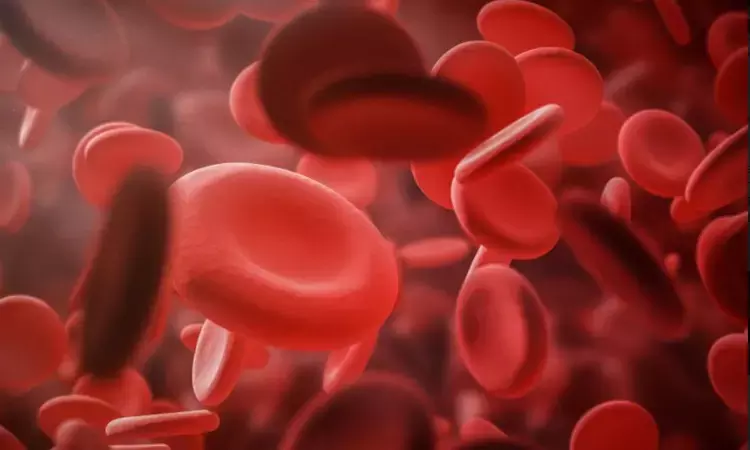- Home
- Medical news & Guidelines
- Anesthesiology
- Cardiology and CTVS
- Critical Care
- Dentistry
- Dermatology
- Diabetes and Endocrinology
- ENT
- Gastroenterology
- Medicine
- Nephrology
- Neurology
- Obstretics-Gynaecology
- Oncology
- Ophthalmology
- Orthopaedics
- Pediatrics-Neonatology
- Psychiatry
- Pulmonology
- Radiology
- Surgery
- Urology
- Laboratory Medicine
- Diet
- Nursing
- Paramedical
- Physiotherapy
- Health news
- Fact Check
- Bone Health Fact Check
- Brain Health Fact Check
- Cancer Related Fact Check
- Child Care Fact Check
- Dental and oral health fact check
- Diabetes and metabolic health fact check
- Diet and Nutrition Fact Check
- Eye and ENT Care Fact Check
- Fitness fact check
- Gut health fact check
- Heart health fact check
- Kidney health fact check
- Medical education fact check
- Men's health fact check
- Respiratory fact check
- Skin and hair care fact check
- Vaccine and Immunization fact check
- Women's health fact check
- AYUSH
- State News
- Andaman and Nicobar Islands
- Andhra Pradesh
- Arunachal Pradesh
- Assam
- Bihar
- Chandigarh
- Chattisgarh
- Dadra and Nagar Haveli
- Daman and Diu
- Delhi
- Goa
- Gujarat
- Haryana
- Himachal Pradesh
- Jammu & Kashmir
- Jharkhand
- Karnataka
- Kerala
- Ladakh
- Lakshadweep
- Madhya Pradesh
- Maharashtra
- Manipur
- Meghalaya
- Mizoram
- Nagaland
- Odisha
- Puducherry
- Punjab
- Rajasthan
- Sikkim
- Tamil Nadu
- Telangana
- Tripura
- Uttar Pradesh
- Uttrakhand
- West Bengal
- Medical Education
- Industry
First case of Gaisbock's syndrome reported in India: A report

Researchers have reported a case of Gaisbock's syndrome in an older man with hypertension that has been published in Journal of the Association of Physicians of India.
The patient's polycythemia cleared up after six weeks and returned to normal after a year. Gaisbock's syndrome, first reported in 1905, is a symptom complex associated with polycythemia that cannot be attributed to polycythemia rubra vera or a secondary erythrocytosis that has formed in reaction to hypoxemia. Male sex, hypertension, smoking, diuretic treatment, obesity, and mental or physical stress are all risk factors for the development of Gaisbock's syndrome.
A 73-year-old man was referred to the outpatient department of internal medicine at Manipal Hospital in Bangalore, the doctors discovered that he had a high RBC count, a high hemoglobin level, and a high hematocrit. Doctors performed physical examination of the patient's temperature, heart rate, blood pressure, respiratory rate and BMI, all were tested and came within normal performed a complete blood count which indicated increases in the patient's hematocrit (packed cell volume, PCV), hemoglobin, and red blood cell count. Other characteristics of red blood cells (mean corpuscular volume, mean corpuscular hemoglobin, and mean corpuscular hemoglobin concentration) were within normal ranges. They also found his vitamin B12 level to be low (96.6 pg/ml) and his blood uric acid level was found to be high (8.2 mg/dl). ABG revealed hypoxemia with pO2 (33.9 mmhg).
They noted that the patient's erythropoietin levels were normal, he had no splenomegaly, and he tested negative for a JAK2 V617F mutation, which strongly protects against a primary or secondary cause of his polycythemia. Although they were unable to test his plasma volume or red cell mass, his hematologic and clinical characteristics, as well as his history, are consistent with Gaisbock's syndrome, in which polycythemia is caused by a decrease in plasma volume. This patient had four risk factors for Gaisbock's syndrome: hypertension, male sex, smoking, and diuretic treatment; of these, hypertension appears to be the most important contributor to Gaisbock's syndrome polycythemia.
The team concluded that treatment should involve strict hypertension control, avoidance of diuretic treatment, smoking cessation, and, in obese patients, the implementation of a strong weight reduction plan. Venesection is seldom required, but it should be considered if PCV levels are sufficiently high to put the patient at risk of thrombotic events (i.e., > 54 mL/dL) or if the patient is suffering signs of cardiovascular ischemia.
Reference:
Gaisbock's Syndrome: A Case Study
Sanjiv Rao, Mallikarjun Kalashetty, D Venkateswarlu.
https://www.japi.org/x294c494/gaisbocks-syndrome-a-case-study
Medical Dialogues consists of a team of passionate medical/scientific writers, led by doctors and healthcare researchers. Our team efforts to bring you updated and timely news about the important happenings of the medical and healthcare sector. Our editorial team can be reached at editorial@medicaldialogues.in.
Dr Kamal Kant Kohli-MBBS, DTCD- a chest specialist with more than 30 years of practice and a flair for writing clinical articles, Dr Kamal Kant Kohli joined Medical Dialogues as a Chief Editor of Medical News. Besides writing articles, as an editor, he proofreads and verifies all the medical content published on Medical Dialogues including those coming from journals, studies,medical conferences,guidelines etc. Email: drkohli@medicaldialogues.in. Contact no. 011-43720751


